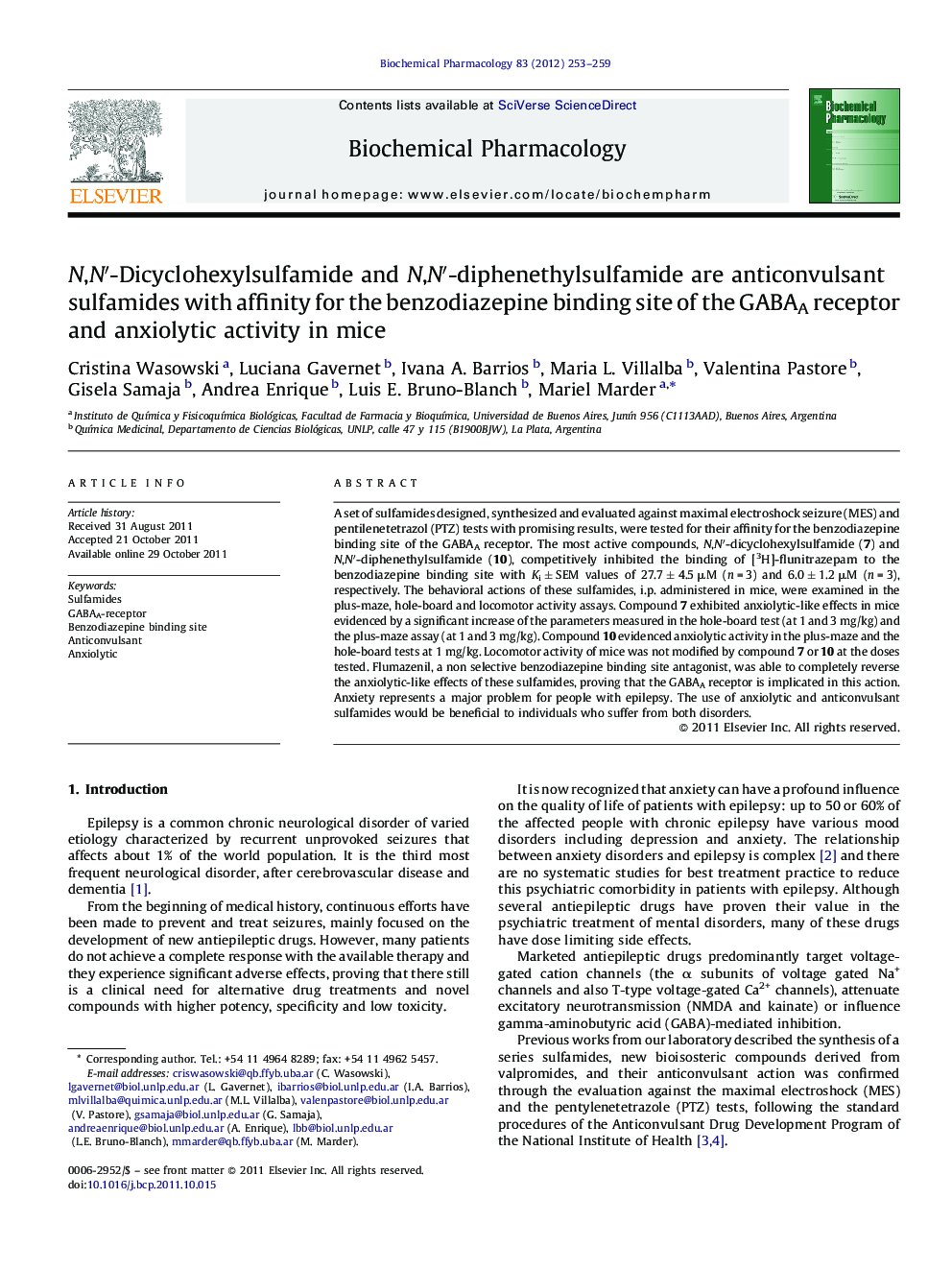| Article ID | Journal | Published Year | Pages | File Type |
|---|---|---|---|---|
| 2513692 | Biochemical Pharmacology | 2012 | 7 Pages |
A set of sulfamides designed, synthesized and evaluated against maximal electroshock seizure (MES) and pentilenetetrazol (PTZ) tests with promising results, were tested for their affinity for the benzodiazepine binding site of the GABAA receptor. The most active compounds, N,N′-dicyclohexylsulfamide (7) and N,N′-diphenethylsulfamide (10), competitively inhibited the binding of [3H]-flunitrazepam to the benzodiazepine binding site with Ki ± SEM values of 27.7 ± 4.5 μM (n = 3) and 6.0 ± 1.2 μM (n = 3), respectively. The behavioral actions of these sulfamides, i.p. administered in mice, were examined in the plus-maze, hole-board and locomotor activity assays. Compound 7 exhibited anxiolytic-like effects in mice evidenced by a significant increase of the parameters measured in the hole-board test (at 1 and 3 mg/kg) and the plus-maze assay (at 1 and 3 mg/kg). Compound 10 evidenced anxiolytic activity in the plus-maze and the hole-board tests at 1 mg/kg. Locomotor activity of mice was not modified by compound 7 or 10 at the doses tested. Flumazenil, a non selective benzodiazepine binding site antagonist, was able to completely reverse the anxiolytic-like effects of these sulfamides, proving that the GABAA receptor is implicated in this action. Anxiety represents a major problem for people with epilepsy. The use of anxiolytic and anticonvulsant sulfamides would be beneficial to individuals who suffer from both disorders.
Graphical abstractFigure optionsDownload full-size imageDownload as PowerPoint slide
